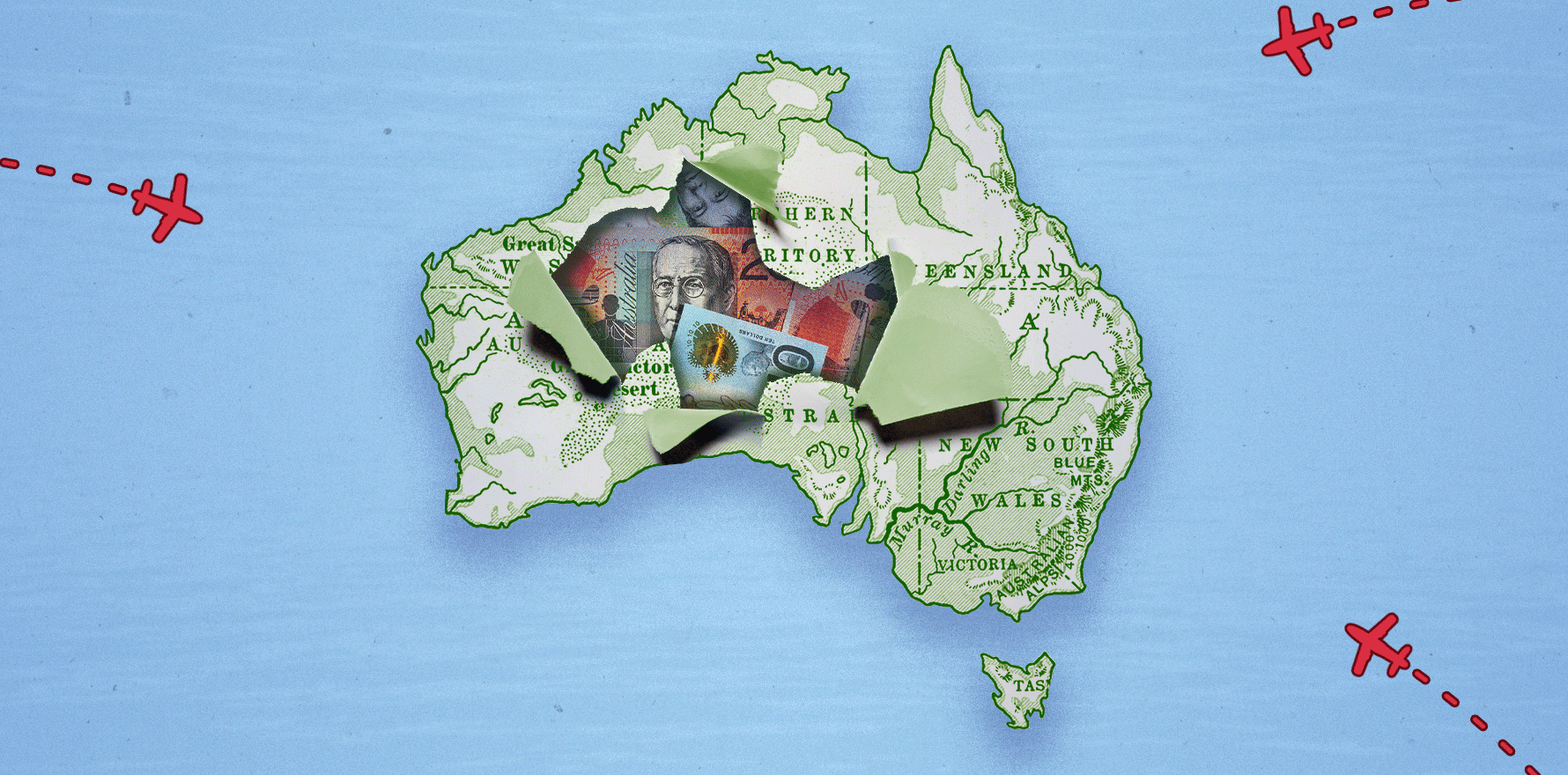Tens of thousands of dollars, months of missed family time, and an exam with a 30% pass rate are a few of the hurdles to clear before you can even get your first doctor job here.
Dr Nitinkumar Chaudhary moved to Australia in 2014. Despite being ready and willing to practice in rural Australia, he didn’t work as a doctor until 2018.
Stories like this are not uncommon, which makes this a staggering stat: the RACGP estimates that 52% of the vocationally-registered GPs working in Australia gained their primary medical degree overseas.
Rural healthcare depends almost entirely on overseas-trained doctors. Australia’s immigration rules funnel most of them into “areas of workforce need”, which until recently were almost exclusively rural and remote locations. In order to claim from Medicare, migrant doctors have to serve out a moratorium in an area of need for a decade.
According to ACRRM statistics, around 40% of doctors in small regional or rural centres were trained overseas, but the RACGP and Rural Workforce Agency Network peg the proportion of international doctors working in rural or remote regions at upwards of 50%.
Migration may have slowed in recent years – pandemic border closures effectively turned off the tap – but Australia is still seen as a desirable destination for medical graduates.
During the recent junior doctor strike action in the UK, junior doctors on the picket line told reporters for the British Medical Journal that they were either considering moving to Australia in the near future, or had colleagues who were. Out of the 77 medical students who graduated from University College Cork in Ireland in 2021, 62 have now migrated to Australia.
There’s clearly enthusiasm to come to Australia to practise medicine, and clearly many doctors ultimately achieve this goal.
But that’s not for lack of obstacles, culminating in an exam/interview that stacks the odds even further against them and which, even according to the colleges that administer it, needs reform.
Dr Chaudhary’s story
When Dr Chaudhary moved from India in December 2014, he was prepared for the initial challenges.
“Obviously, when you arrive [in Australia], you have big, big challenges to survive and [finding] some income – you can’t straight away start working as a doctor, unfortunately, in Australia,” he tells The Medical Republic.
“So I had to think about something out of the box, and initially I worked in a petrol station.”
Unable to get a start in the medical field in Bundaberg, Dr Chaudhary and his wife moved to Western Australia when he got a job as a medical scientist at an IVF clinic in Perth.
He worked there for two years, picking up additional skills in embryology, until taking the both the Australian Medical Council (AMC) multiple choice and practical clinical exams in quick succession.
Between the AMC multiple choice exam and the clinical exam, Dr Chaudhary found out he was going to be a father for the first time.
Dr Chaudhary also took an English test during this time and achieved a band eight result, meaning he has a “fully operational command of the language”.
The minimum English level required for international doctors in Australia is a band seven, so in theory Dr Chaudhary had a competitive result. He had even secured permanent residency.
By this time, it was May 2017.
“My practical exam results were going to come on the third of May, and my wife had her due date on the sixth of May,” he says.
“I was like ‘oh, my God. I don’t want an early baby!’”
Dr Chaudhary passed both his exams, and his son was born a week late – “double happiness”, he says.
Passing the AMC exams meant he now had an AMC certificate and could start applying for jobs.
The hard part should have been over. Little did he know, it was just about to start.
Even though he had his AMC certificate and competitive English test result, he needed an active job offer in order to apply to the Medical Board of Australia for provisional registration.
It took almost 200 job applications to get an offer.
“I started to feel nervous,” Dr Chaudhary says.
“I wouldn’t say it was a depression but just feeling like ‘what should I do to magically make things go ahead?’”
Six months on, Dr Chaudhary finally got an offer, only to find out that he had been working toward Australian registration for so long that his recency of practice had expired.
“I had to fly back to India to do some recent practice and get some recent work experience,” he says.
“I went there and then worked for three months – and it was Christmas time when I went, so I had to pay almost four times more than the routine flight charges.”
When he returned to Australia with his recency of practice updated, the job had been given to another candidate.
Back to the drawing board.
“In July I got to interview again, I was selected and then I started working in [Queensland] in September,” Dr Chaudhary says.
“I did my first ever AMC [exam] in November 2016, and I started working as a real doctor in September 2018, almost two years later.”
Hidden costs
Those quadrupled airfares were just one expense in what is a financially draining process.
First up, just creating an AMC portfolio sets you back $600.
Then you’ll be out-of-pocket $2920 for the multiple-choice exam and $3730 for the clinical component.
The English test costs anywhere between $200 and $600 depending on the provider.
The final hurdle to registration, which can only be completed once an employment offer is secured, is the Pre-Employment Structured Clinical Interview (PESCI), which costs between $2150 and $2500.
Assuming none of the tests need to be re-taken or postponed, and no results have to be re-issued – all of which incur additional fees – it adds up to a minimum of $9600 for overseas-trained doctors trying to get registered through the standard pathway.
When factoring in the cost of travel, time off work and accommodation needed for doctors to take the PESCI, some estimates place that assessment alone at $21,000.
There’s also an emotional toll.
While renewing his recency of practice in India, Dr Chaudhary missed valuable moments with his baby son.
“I couldn’t see him when he started to crawl,” he says.
“I missed when he started to sit and all those first milestones – it’s always going to be in my heart, that I wasn’t there when those things happened.”
In March of 2023, Dr Chaudhary was officially inducted as a fellow of the RACGP, but it’s a journey he would not necessarily do again.
“You read that Australia is running short of doctors, that there is a shortage of GPs in rural and remote and regional areas,” he says.
“I was ready to work wherever I got the opportunity.
“It’s … not just about me, whenever I talk to IMGs, some of them or most of them would have had some kind of difficulty [getting registered in Australia].”
Current regulatory settings mean that Dr Chaudhary will spend at least the next five years serving out the rest of the 10-year moratorium that all internationally-trained doctors are required to spend in an area of workforce need.
DPA system
In previous years, MM3-7 locations – i.e. rural and remote towns – were the only areas eligible to be automatically classified as an area of workforce need, or distribution priority areas, as the government calls them.
Changes last year meant that all MM2 areas and some MM1 areas were also included, resulting in an exodus of overseas-trained doctors moving to larger regional towns and the underserved outskirts of cities like Redcliffe.
Roughly 72 doctors moved from an MM3-7 area to an MM2 area in 2022 – that is, escaped from a remote to a regional setting – up from around 40 in previous years.
It’s shaping up to become a real crisis for rural doctors, and it’s put the two GP colleges on something of a collision course.
In a submission to the independent review of the regulatory settings and qualification recognition for overseas doctors and international students who have studied in Australia, ACRRM outlines the “perverse” impact on the rural workforce so far.
“To address relatively minor workforce shortages in MM2 and outer urban areas, the scheme was extended last year to support employment in these areas,” the rural college says.
“Within a short space of time, this triggered significant movement of IMG doctors out of MM3-7 to take up positions in MM1-2 and has made it substantially harder to recruit to MM3-7 vacancies.”
To be clear, ACRRM doesn’t necessarily support forcing internationally trained doctors into the regions. Location restrictions are a deficit model policy – a stick, not a carrot – and tend to end up with doctors leaving the community at the end of their moratorium.
“International medical graduates should feel encouraged to go into remote, rural and regional centres that that are underserved,” ACRRM president Dr Dan Halliday tells TMR.
“However, they need to have a very good package of support around that.”
In a submission to a separate inquiry, this time from the Joint Standing Committee on Migration, the RACGP explicitly states that it has never endorsed the moratorium model at all.
“The changes to DPA have made it almost irrelevant … it has devalued rural and regional areas,” RACGP president Dr Nicole Higgins tells TMR.
It’s a nuanced difference, but where ACRRM appears to want to fix DPA and make the system more effective, the RACGP appears to want to start fresh.
On one topic, though, the colleges appear to be united: something needs to be done about the PESCI.
The PESCI
The PESCI is the final boss standing between an internationally trained doctor and registration.
Every potential job requires its own PESCI, which can only be administered by ACRRM or the RACGP.
It’s not an exam in the traditional sense, in that it’s actually a structured interview designed to determine if a specific doctor is suitable to work in a specific role, which in turn will be affected by the location, patient population and support levels.
It is an exam in the sense that there’s a binary outcome – the person either clears it and gets registered, or they do not.
According to data from the 2021-22 financial year, most people do not pass.
Out of the 345 would-be GPs who sat an ACRRM-facilitated PESCI that year, just 84 were found suitable, a pass rate of 23%.
RACGP candidates fare better. The royal college only facilitated 141 PESCIs last year but 66 doctors, 47%, were found suitable for practice.
Part of the disparity in overall numbers is down to the fact that the RACGP only delivers PESCIs in NSW, ACT, Victoria, Tasmania and South Australia.
Earlier this year, the RACGP announced it would be expanding to offer PESCI assessments nationwide.
For what it’s worth, ACRRM acknowledges that its pass rates have historically been lower than other providers, and says it is working with AHPRA and the RACGP to “understand the standard of pass rates against other providers”.
The low pass rates can be a real problem for practices trying to attract a doctor.
In a 2021 submission to a senate inquiry into the provision of GPs in rural Australia, Queensland GP Dr John Denness talks about having had seven potential recruits in a row fail the PESCI.
“I only accept people who I think have a high chance of passing – e.g. IMG who finished their GP training in their country, max RACGP GP recognition, visiting lecturer in family medicine, mentor and examiner for GP exams in their country, international examiner for MRCGP,” he says.
“However, even the candidates who look promising in interview, observership and experience do not pass this PESCI, even on repeated sitting.”
Discouraged by having seven applicants fail in a row, Dr Denness temporarily stopped accepting applications from overseas trained doctors.
It’s not a leap to assume that situations like this – where practices, for valid reasons, give up trying to get a doctor through the PESCI – are part of the reason that Dr Chaudhary ended up sending out almost 200 unsuccessful applications.
Dr Denness also said that multiple candidates had passed on job offers to work at his practice after hearing the statistics on how many people fail.
Speaking at the Senate inquiry, Dr Denness said culturally appropriate care for Indigenous and Torres Strait Islander patients was a common stumbling block for the doctors he had recruited in the past, as it was hard to gain familiarity without working in Australia, especially in rural settings.
ACRRM tells TMR that cultural safety is included in a range of its PESCI scenarios, and there is no evidence to suggest it is a point of failure. It does, however, allow that common obstacles include an understanding of the Australian healthcare context and ability to demonstrate rapport building.
The RACGP says common challenges for its applicants include taking a focused history of the presenting complaint rather than trying to cover everything in a general history, identifying potential red flags, providing relevant differential diagnoses, and placing management and treatment in the Australian context of general practice.
Unlike ACRRM, the RACGP says that doctors commonly perform poorly in scenarios to do with Aboriginal cultural safety and specific healthcare needs.
“Applicants coming from non-Australian backgrounds have limited or no experience in supporting Aboriginal and Torres Strait Islander populations,” a college spokesman tells TMR.
“The RACGP offers online learning modules on culturally appropriate and safe care, including as part of our Fellowship Support Program, which we strongly encourage international medical graduates to complete.”
Indigenous patients need culturally safe care, and it makes sense to ensure that clinicians are capable in this area.
But because the health needs of Indigenous Australian communities are unique to Australia – and often unique to individual communities – it’s a tough ask to expect a doctor who is not allowed to practice in Australia to be fully across this area.
How do we fix it?
While the RACGP migration inquiry submission doesn’t refer to the PESCI by name, it does call for better Aboriginal and Torres Strait Islander cultural training for internationally trained doctors before they are deployed to rural areas.
“We ask the committee to consider our recommendation for a formalised collaboration between the Rural workforce Agencies and Indigenous peak bodies such as NACCHO to establish a quality training/experience curriculum for [international medical graduates] before they commence medical practice in Australia,” the college says.
ACCRM’s submission to the review of regulatory settings notes that applicants having to take individual PESCI assessments every time they apply for a new role places undue burden on both the applicants and the system itself.
It stopped short of asking for a complete overhaul, though.
“The college would however caution against an approach which emphasised provision of detailed assessment outcomes by different providers,” it says.
“Ultimately the system cannot compromise the quality and safety of patients, given there is an element of profit motive to the system this approach risks creating a systemic incentive to all providers to compromise robust assessments in favour of being able to market better pass rates.”
Instead, it asks for the medical board to provide more detailed information to support consistent understanding of what safety and quality benchmarks the PESCI should meet.
Back to Dr Chaudhary
Notorious as it is, the PESCI didn’t pose much of a problem for Dr Chaudhary.
He’s still studying though, aiming to skill up in pain medicine to better serve the community he works in.
“My journey of being a complete leisure person hasn’t arrived yet,” he says.
His son, Neel – now the older of two – has never known a world where his dad isn’t studying.
“He is a five-year-old kid, the best one anyone can imagine,” Dr Chaudhary says.
“For almost six, eight months [in the lead up to fellowship exams] he didn’t have any life in the evening.
“He never got to go to the park. He did not get to go play. He knew that ‘my dad is studying and I need to go to bed early so he can study’.”





